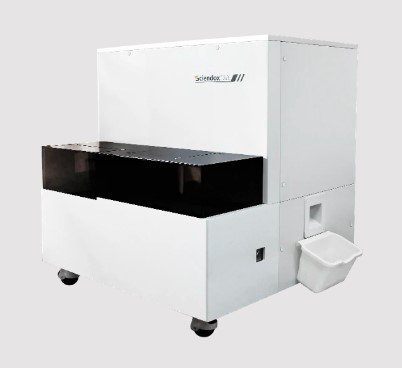Adaptations in Phlebotomy Procedures for Virtual Patient Consultations in the United States
Summary
- Phlebotomy procedures have evolved to accommodate the increase in virtual patient consultations through telemedicine in the United States.
- Medical labs have had to adjust their protocols to ensure accurate and efficient specimen collection for remote patients.
- Phlebotomists have embraced technology to streamline the process of collecting blood samples from patients during telehealth appointments.
Introduction
The rise of telemedicine in the United States has revolutionized the way healthcare services are delivered to patients. With the convenience of virtual consultations, patients no longer have to visit healthcare facilities in person for routine check-ups or follow-up appointments. However, this shift towards telehealth has also presented challenges for medical labs and phlebotomists who are responsible for collecting and analyzing blood samples for diagnostic purposes.
Adaptations in Phlebotomy Procedures
Phlebotomy procedures have been adapted to meet the demands of virtual patient consultations through telemedicine. These adaptations include:
Virtual Training and Certification
Phlebotomists are now required to undergo virtual training and certification programs to ensure that they are equipped to collect blood samples from patients during telehealth appointments. This training includes virtual simulation exercises to practice specimen collection techniques in a remote setting.
Remote Specimen Collection Kits
Medical labs have started to provide remote specimen collection kits to patients who are undergoing virtual consultations. These kits contain all the necessary supplies for blood sample collection, including instructions for patients and pre-labeled containers for specimen transport.
Video Guidance for Patients
Phlebotomists have started using video guidance to walk patients through the blood sample collection process during telehealth appointments. This ensures that patients follow the correct procedures for specimen collection and minimizes the risk of errors.
Challenges and Solutions
While phlebotomy procedures have been adapted to accommodate virtual patient consultations through telemedicine, there are still challenges that need to be addressed. Some of the common challenges include:
Lack of Physical Examination
One of the challenges phlebotomists face during virtual consultations is the lack of a physical examination of the patient. Without being able to assess the patient in person, phlebotomists may encounter difficulties in locating a suitable vein for blood sample collection.
Patient Compliance
Ensuring patient compliance with blood sample collection instructions can be challenging during telehealth appointments. Some patients may struggle to follow the directions provided by phlebotomists, leading to errors in specimen collection.
Technical Issues
Technical issues such as poor internet connectivity or audiovisual problems can also hinder the process of collecting blood samples from patients during virtual consultations. Phlebotomists need to be prepared to troubleshoot these issues to ensure a smooth procedure.
Technological Innovations
To overcome the challenges associated with virtual patient consultations through telemedicine, phlebotomists have embraced technological innovations to streamline the process of collecting blood samples. Some of these innovations include:
Telephlebotomy Devices
Telephlebotomy devices are portable blood collection kits that allow phlebotomists to collect blood samples from patients remotely. These devices are equipped with video guidance features to assist patients in self-collecting blood samples under the supervision of a phlebotomist.
Vein Visualization Technology
Vein Visualization technology uses near-infrared light to map the veins in a patient's arm, making it easier for phlebotomists to locate a suitable vein for blood sample collection. This technology can be integrated into telephlebotomy devices to improve the accuracy of specimen collection.
Electronic Health Records Integration
Phlebotomists can now access patients' Electronic Health Records during virtual consultations to review their medical history and identify any potential risks or contraindications for blood sample collection. This integration ensures that the specimen collection process is conducted safely and accurately.
Conclusion
Phlebotomy procedures have undergone significant adaptations in response to the increase in virtual patient consultations through telemedicine in the United States. By embracing technology and implementing innovative solutions, phlebotomists have been able to ensure accurate and efficient specimen collection for remote patients. As telemedicine continues to thrive, it is essential for medical labs and phlebotomists to stay abreast of the latest advancements in phlebotomy procedures to meet the evolving needs of virtual healthcare delivery.

Disclaimer: The content provided on this blog is for informational purposes only, reflecting the personal opinions and insights of the author(s) on the topics. The information provided should not be used for diagnosing or treating a health problem or disease, and those seeking personal medical advice should consult with a licensed physician. Always seek the advice of your doctor or other qualified health provider regarding a medical condition. Never disregard professional medical advice or delay in seeking it because of something you have read on this website. If you think you may have a medical emergency, call 911 or go to the nearest emergency room immediately. No physician-patient relationship is created by this web site or its use. No contributors to this web site make any representations, express or implied, with respect to the information provided herein or to its use. While we strive to share accurate and up-to-date information, we cannot guarantee the completeness, reliability, or accuracy of the content. The blog may also include links to external websites and resources for the convenience of our readers. Please note that linking to other sites does not imply endorsement of their content, practices, or services by us. Readers should use their discretion and judgment while exploring any external links and resources mentioned on this blog.
